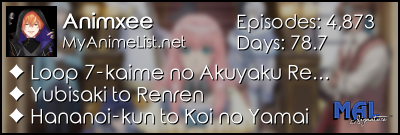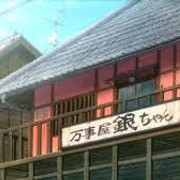New
Sep 26, 2018 12:29 PM
#51
| To me it's entertainment, like video games. My life doesn't revolve around it. I don't go apeshit if someone doesn't like the same anime that I do. I don't scream blood-curdling madness over how hot a character is. It's just fun to watch and immerse myself in. |
 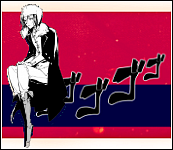  |
Sep 26, 2018 12:33 PM
#52
Sep 26, 2018 12:38 PM
#53
| Rn it's just another source of entertainmemt for me but I do think anime is gonna become a passion of mine once I complete more and more anime. |
Sep 26, 2018 12:41 PM
#54
| A fun hobby to pass the time. (Yeah I could be doing something more productive I know). It's also pretty entertaining too. |
Least degenerate visual novel enjoyer.  |
Sep 26, 2018 12:43 PM
#55
Sep 26, 2018 12:48 PM
#56
| Anime is entertainment that I enjoy watching because I grew tired of the same old sitcoms, reality shows and cop shows that they show on American TV. Hell, I don't even think that The Big Bang Theory is as good as it used to be. |
Sep 26, 2018 7:41 PM
#58
MayoiYui said: people value anime differently to some, anime is a hobby to some, anime is a passion to some, anime is an inseperable part of their life to some, anime is happiness to some, anime is everything some people see anime as an interest that worth investing time on; they spend some of their free time watching anime for pure enjoyment and kill off boredom in the process; some others would bring it to another degree as they spend most of their time outside of their work and education on it and view anime as a reliable source of joy; there are also people who become dependent on anime to live as they become overly addicted to anime to me anime was a hobby; I used to spend some of my free time on anime when I was alone or I wasn't eager to hang out with my friends due to my mood. It was the puriest leisure I had as I enjoy it to the fullest: discovering new anime to watch, make planlists, watch them with laughters and tears. A year later, I tend to become more reliable on anime to kill off my boredom as I became less sociable and willing to go out of my room (shitty weather) sometimes I do feel like Im watching the anime for the sake of my ego that I wish to let people know I've watched this anime (weird of me I know). Since then, I have been constantly watching whatever anime I could find in order to fulfill my empty feelings that I could not find something to do elsewhere beside doing volunteers and exercising with my friends. Whatsoever, anime has became my lifestyle now What is anime to you and how much do you value anime? To me, anime is the way of life. Without anime, my life would be black and white. Sure it's an entertainment, but sometimes we just fell in love with the medium. |
Sep 26, 2018 7:43 PM
#59
Sep 26, 2018 7:52 PM
#60
| To me....Anime is love, Anime is life. |
| All weebs creatures of the galaxy, hear this message. Those of you who listen will not be struck by western animation. You will no longer know hunger, nor pain. Your Anime have come to lead you now. Our strength shall serve as a luminous sun toward which all intelligence may blossom. And the impervious shelter beneath which you will prosper. However, for those who refuse our offer and cling to their western animation ways… For you, there will be great wrath. |
Sep 26, 2018 7:55 PM
#61
| To me, anime is my main hobby and something that takes up a large part of my free time. |
 |
Sep 26, 2018 8:07 PM
#62
| sometimes i just wanna be punched in the feels a bit, shed some tears, remind me im human. And also that really bubbly jittery feeling, like excitement, but its something more? I like when an anime makes me feel that :D I just really like connecting to characters and feeling for them. |
Sep 26, 2018 8:28 PM
#63
| anime was my passion. i just don't watch as much as i used to |
Sep 26, 2018 8:34 PM
#64
| it's one of my main hobbies and my main source of entertainment :) |
 Sweet♥I guess, as long as I have life, all I can do is fight with all my might. |
Sep 26, 2018 8:37 PM
#65
| To me--anime is an inseperable part of my life and a source of happiness. |
Sep 26, 2018 8:41 PM
#66
| Idk, some weird kind of Chinese cartoon that we Western degenerate keep watching. |
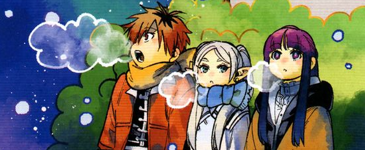 |
Sep 26, 2018 9:04 PM
#67
| An entertainment industry (wtf there is a minimun of characters for posting?, the more you know) |
Sep 26, 2018 9:10 PM
#68
| Anime to me is something to get away from my problems. okay, maybe not all the time, I love to watch a lot of series, but when I am going through rough times, anime really knows how to cheer me up. Sounds childish, I know, but you'd be surprised on how much it could change you. I'm not talking about the shows that have ecchi or anything of the sort, but I guess anything that has a good story to it, heck even a romance would do it. |
Sep 26, 2018 10:15 PM
#69
| For me, anime gives me a new perspective on how I view life and how human relationships work. It's like an escape from reality whenever I have problems with my life. |
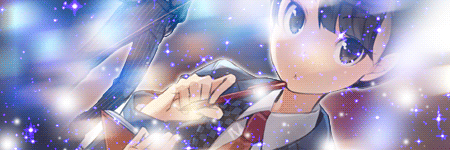 |
Sep 26, 2018 10:49 PM
#70
Sweet said: it's one of my main hobbies and my main source of entertainment :) Pretty much the same for me except I have other "hobbies" besides anime. |
| Life Is Short But Intense. |
Sep 26, 2018 11:47 PM
#71
| I have ready through most if not all of your comments and they surprised me kind of! Most people are positive about anime as they value them as a form of entertainment. Some of you view anime as a coping mechanism that allow you to escape from reality hmm I can relate to this much when I was in highschool. Sometimes you prefer to be alone and spend time doing things you enjoy sometimes you really despise status quo and hope to get out of the box so you start to watch anime in order to replace your frustration with temporary if not long lasting enjoyment and excitement; Nonetheless, there are some comments reflecting that anime has not been a geniunely good influence on you (anime is a mistake < not as a meme I guess, anime is wrong or something like that) I kinda get it sometimes when I got this empty and unfulfilling feelings in my heart when I realize nothing change afterall; I'm still me sitting in my room alone watching these chinese cartoons on my computer screen eating cup ramen without doing anything constructive. I sometimes will question my motive of watching anime (is it because I'm lonely and I'm watching anime in order to proxy feelings for the characters? is it because I'm watching anime for the sake for completion etc) and thought to myself that I could have been doing something more meaningful instead. sorry I am too lazy to reply to all those comments |
MAYOIIISep 26, 2018 11:57 PM
Sep 27, 2018 12:08 AM
#72
| Anime to me is a passion/happiness.when I watch anime I feel so happy. Not all anime are my passion but naruto and now my hero have become THAT! I love to talk about these anime’s and always look up any extra info I need. I feel joy when I see relationships flourish in anime’s. Laid-back camp is my favourite to just sit back after a long day and relax to. I watch anime because it makes me happy, and it I guess it has become my passion in all these years if I catch the right anime :) I grew up watching naruto weekly and haven’t stopped watching anime since |
| You don’t have enough hatred |
Sep 27, 2018 12:21 AM
#73
| Sometimes it's work, sometimes it's entertainment, and other times, it's frustration. Why did I decide to watch Hand Shakers again... |
Sep 27, 2018 12:37 AM
#74
| Anime is my safe space, whenever shit happens in my life I can immerse myself in another world. |
 |
Sep 27, 2018 12:43 AM
#75
| To me it's a hobby I turn to for entertainment, specifically storytelling and being taken on a journey through a fictional setting. |
| Avatar character is Gabriel from Gabriel DropOut. |
Sep 27, 2018 3:42 AM
#76
| For me, it's both a form of entertainment as well as a form of connection and communication. It gives me a way to talk to all different kinds of people, whether I'm reccommending a show, or just discussing something. My watching of anime means that I can connect with many different people. Plus, it gives me a bunch of things that I can lazily reference. |
| Insert "witty" yet """"""thought-provoking"""""" comment about, um, I dunno, all anime being trash, here. Or something similar. Maybe? Possibly? Yeah, whatever, let's go with that. Nobody's gonna read this anyway. |
Sep 27, 2018 3:52 AM
#77
| A source of entertainment, and nostalgia. Aslong as it is interesting, I will read and watch. |
| http://shintai88.deviantart.com/ Just some of my artwork (Total Noob Btw) http://www.pixiv.net/member.php?id=14885218 https://www.youtube.com/channel/UCMw9h7UH_6ciM7Swteaf5UA http://www.twitch.tv/shintai88 |
Sep 27, 2018 7:24 AM
#78
| A secret shame that can only be validated if you're an artist. |
 |
Sep 27, 2018 7:57 AM
#79
| A form of entertainment that i happen to enjoy and talk about!! |
Sep 27, 2018 9:14 AM
#80
| Anime is hand-drawn or computer animation originating from or associated with Japan. The word anime is the Japanese term for animation, which means all forms of animated media. Outside Japan, anime refers specifically to animation from Japan or as a Japanese-disseminated animation style often characterized by colorful graphics, vibrant characters and fantastical themes. The culturally abstract approach to the word's meaning may open up the possibility of anime produced in countries other than Japan. For simplicity, many Westerners strictly view anime as a Japanese animation product. Some scholars suggest defining anime as specifically or quintessentially Japanese may be related to a new form of OThe earliest commercial Japanese animation dates to 1917, and Japanese anime production has since continued to increase steadily. The characteristic anime art style emerged in the 1960s with the works of Osamu Tezuka and spread internationally in the late twentieth century, developing a large domestic and international audience. Anime is distributed theatrically, by way of television broadcasts, directly to home media, and over the Internet. It is classified into numerous genres targeting diverse broad and niche audiences. Anime is a diverse art form with distinctive production methods and techniques that have been adapted over time in response to emergent technologies. It consists of an ideal story-telling mechanism, combining graphic art, characterization, cinematography, and other forms of imaginative and individualistic techniques. The production of anime focuses less on the animation of movement and more on the realism of settings as well as the use of camera effects, including panning, zooming, and angle shots. Being hand-drawn, anime is separated from reality by a crucial gap of fiction that provides an ideal path for escapism that audiences can immerse themselves into with relative ease. Diverse art styles are used and character proportions and features can be quite varied, including characteristically large emotive or realistically sized eyes. The anime industry consists of over 430 production studios, including major names like Studio Ghibli, Gainax, and Toei Animation. Despite comprising only a fraction of Japan's domestic film market, anime makes up a majority of Japanese DVD sales. It has also seen international success after the rise of English-dubbed programming. This rise in international popularity has resulted in non-Japanese productions using the anime art style. Whether these works are anime-influenced animation or proper anime is a subject for debate amongst fans. +Definition and usage Anime is an art form, specifically animation,that includes all genres found in cinema, but it can be mistakenly classified as a genre. In Japanese, the term anime refers to all forms of animation from around the world.In English, anime (/ˈænəˌmeɪ/) is more restrictively used to denote a "Japanese-style animated film or television entertainment" or as "a style of animation created in Japan".The etymology of the word anime is disputed. The English term "animation" is written in Japanese katakana as アニメーション (animēshon, pronounced [animeːɕoɴ]) and is アニメ (anime) in its shortened form.Some sources claim that anime derives from the French term for animation dessin animé,but others believe this to be a myth derived from the French popularity of the medium in the late 1970s and 1980s. In English, anime—when used as a common noun—normally functions as a mass noun. (For example: "Do you watch anime?" or "How much anime have you collected?") Prior to the widespread use of anime, the term Japanimation was prevalent throughout the 1970s and 1980s. In the mid-1980s, the term anime began to supplant Japanimation. In general, the latter term now only appears in period works where it is used to distinguish and identify Japanese animation.The word anime has also been criticised, e.g. in 1987, when Hayao Miyazaki stated that he despised the truncated word anime because to him it represented the desolation of the Japanese animation industry. He equated the desolation with animators lacking motivation and with mass-produced, overly expressionistic products relying upon a fixed iconography of facial expressions and protracted and exaggerated action scenes but lacking depth and sophistication in that they do not attempt to convey emotion or thought. +Format The first format of anime was theatrical viewing which originally began with commercial productions in 1917. Originally the animated flips were crude and required played musical components before adding sound and vocal components to the production. On July 14, 1958, Nippon Television aired Mogura no Abanchūru ("Mole's Adventure"), both the first televised and first color anime to debut. It wasn't until the 1960s when the first televised series were broadcast and it has remained a popular medium since. Works released in a direct to video format are called "original video animation" (OVA) or "original animation video" (OAV); and are typically not released theatrically or televised prior to home media release.The emergence of the Internet has led some animators to distribute works online in a format called "original net anime" (ONA). The home distribution of anime releases were popularized in the 1980s with the VHS and LaserDisc formats. The VHS NTSC video format used in both Japan and the United States is credited as aiding the rising popularity of anime in the 1990s. The Laser Disc and VHS formats were transcended by the DVD format which offered the unique advantages; including multiple subtitling and dubbing tracks on the same disc. The DVD format also has its drawbacks in the its usage of region coding; adopted by the industry to solve licensing, piracy and export problems and restricted region indicated on the DVD player. The Video CD (VCD) format was popular in Hong Kong and Taiwan, but became only a minor format in the United States that was closely associated with bootleg copies. +History Japanese animation began in the early 20th century, when Japanese filmmakers experimented with the animation techniques also pioneered in France, Germany, the United States and Russia. A claim for the earliest Japanese animation is Katsudō Shashin, an undated and private work by an unknown creator. In 1917, the first professional and publicly displayed works began to appear. Animators such as Ōten Shimokawa and Seitarou Kitayama produced numerous works, with the oldest surviving film being Kouchi's Namakura Gatana, a two-minute clip of a samurai trying to test a new sword on his target only to suffer defeat.The 1923 Great Kantō earthquake resulted in widespread destruction to Japan's infrastructure and the destruction of Shimokawa's warehouse, destroying most of these early works. By the 1930s animation was well established in Japan as an alternative format to the live-action industry. It suffered competition from foreign producers and many animators, Noburō Ōfuji and Yasuji Murata, who still worked in cheaper cutout animation rather than cel animation.Other creators, Kenzō Masaoka and Mitsuyo Seo, nonetheless made great strides in animation technique; they benefited from the patronage of the government, which employed animators to produce educational shorts and propaganda.The first talkie anime was Chikara to Onna no Yo no Naka, produced by Masaoka in 1933.By 1940, numerous anime artists' organizations had risen, including the Shin Mangaha Shudan and Shin Nippon Mangaka.The first feature-length animated film was Momotaro's Divine Sea Warriors directed by Seo in 1944 with sponsorship by the Imperial Japanese Navy. The success of The Walt Disney Company's 1937 feature film Snow White and the Seven Dwarfs profoundly influenced many Japanese animators.In the 1960s, manga artist and animator Osamu Tezuka adapted and simplified many Disney animation techniques to reduce costs and to limit the number of frames in productions. He intended this as a temporary measure to allow him to produce material on a tight schedule with inexperienced animation staff.[38] Three Tales, aired in 1960, was the first anime shown on television.[39] The first anime television series was Otogi Manga Calendar, aired from 1961 to 1964.[40] The 1970s saw a surge of growth in the popularity of manga, Japanese comic books and graphic novels, many of which were later animated. The work of Osamu Tezuka drew particular attention: he has been called a "legend"and the "god of manga". His work—and that of other pioneers in the field—inspired characteristics and genres that remain fundamental elements of anime today. The giant robot genre (known as "mecha" outside Japan), for instance, took shape under Tezuka, developed into the Super Robot genre under Go Nagai and others, and was revolutionized at the end of the decade by Yoshiyuki Tomino who developed the Real Robot genre. Robot anime like the Gundam and The Super Dimension Fortress Macross series became instant classics in the 1980s, and the robot genre of anime is still one of the most common in Japan and worldwide today. In the 1980s, anime became more accepted in the mainstream in Japan (although less than manga), and experienced a boom in production. Following a few successful adaptations of anime in overseas markets in the 1980s, anime gained increased acceptance in those markets in the 1990s and even more at the turn of the 21st century. In 2002, Spirited Away, a Studio Ghibli production directed by Hayao Miyazaki won the Golden Bear at the Berlin International Film Festival and in 2003 at the 75th Academy Awards it won the Academy Award for Best Animated Feature. +Genres Anime are often classified by target demographic, including childrens' (子供 kodomo), girls' (少女 shōjo), boys' (少年 shōnen) and a diverse range of genres targeting an adult audience. Shoujo and shounen anime sometimes contain elements popular with children of both sexes in an attempt to gain crossover appeal. Adult anime may feature a slower pace or greater plot complexity that younger audiences typically find unappealing, as well as adult themes and situations. A subset of adult anime works featuring pornographic elements are labeled "R18" in Japan, and are internationally known as hentai (originating from pervert (変態 hentai)). By contrast, some anime subgenres incorporate ecchi, sexual themes or undertones without depictions of sexual intercourse, as typified in the comedic or harem genres; due to its popularity among adolescent and adult anime enthusiasts, the inclusion of such elements is considered a form of fan service. Anime's genre classification is different from other types of animation and does not lend itself to simple identity. Gilles Poitras compared the labeling Gundam 0080 and its complex depiction of war as a "giant robot" anime akin to simply labeling War and Peace a "war novel".Science fiction is a major anime genre and includes important historical works like Tezuka's Astro Boy and Yokoyama's Tetsujin 28-go. A major subgenre of science fiction is mecha, with the Gundam metaseries being iconic. The diverse fantasy genre includes works based on Asian and Western traditions and folklore; examples include the Japanese feudal fairytale InuYasha, and the depiction of Scandinavian goddesses who move to Japan to maintain a computer called Yggdrasil in Ah! My Goddess. Genre crossing in anime is also prevalent, such as the blend of fantasy and comedy in Dragon Half, and the incorporation of slapstick humor in the crime anime Castle of Cagliostro.Other subgenres found in anime include magical girl, harem, sports, martial arts, literary adaptations, medievalism and war. Genres have emerged that explore homosexual romances. While originally pornographic in terminology, yaoi (male homosexuality) and yuri (female homosexuality) are broad terms used internationally to describe any focus on the themes or development of romantic homosexual relationships. Prior to 2000, homosexual characters were typically used for comedic effect, but some works portrayed these characters seriously or sympathetically. +Attributes Anime differs greatly from other forms of animation by its diverse art styles, methods of animation, its production, and its process. Visually, anime is a diverse art form that contains a wide variety of art styles, differing from one creator, artist, and studio.While no one art style predominates anime as a whole, they do share some similar attributes in terms of animation technique and character design. -Animation technique Anime follows the typical production of animation, including storyboarding, voice acting, character design, and cel production (Shirobako, itself a series, highlights many of the aspects involved in anime production). Since the 1990s, animators have increasingly used computer animation to improve the efficiency of the production process. Artists like Noburō Ōfuji pioneered the earliest anime works, which were experimental and consisted of images drawn on blackboards, stop motion animation of paper cutouts, and silhouette animation.Cel animation grew in popularity until it came to dominate the medium. In the 21st century, the use of other animation techniques is mostly limited to independent short films,[59] including the stop motion puppet animation work produced by Tadahito Mochinaga, Kihachirō Kawamoto and Tomoyasu Murata.Computers were integrated into the animation process in the 1990s, with works such as Ghost in the Shell and Princess Mononoke mixing cel animation with computer-generated images.[62] Fuji Film, a major cel production company, announced it would stop cel production, producing an industry panic to procure cel imports and hastening the switch to digital processes.Prior to the digital era, anime was produced with traditional animation methods using a pose to pose approach.The majority of mainstream anime uses fewer expressive key frames and more in-between animation.Japanese animation studios were pioneers of many limited animation techniques, and have given anime a distinct set of conventions. Unlike Disney animation, where the emphasis is on the movement, anime emphasizes the art quality and let limited animation techniques make up for the lack of time spent on movement. Such techniques are often used not only to meet deadlines but also as artistic devices.Anime scenes place emphasis on achieving three-dimensional views, and backgrounds are instrumental in creating the atmosphere of the work.The backgrounds are not always invented and are occasionally based on real locations, as exemplified in Howl's Moving Castle and The Melancholy of Haruhi Suzumiya.Oppliger stated that anime is one of the rare mediums where putting together an all-star cast usually comes out looking "tremendously impressive".The cinematic effects of anime differentiates itself from the stage plays found in American animation. Anime is cinematically shot as if by camera, including panning, zooming, distance and angle shots to more complex dynamic shots that would be difficult to produce in reality.In anime, the animation is produced before the voice acting, contrary to American animation which does the voice acting first; this can cause lip sync errors in the Japanese version. -Characters Body proportions of human anime characters tend to accurately reflect the proportions of the human body in reality. The height of the head is considered by the artist as the base unit of proportion. Head heights can vary, but most anime characters are about seven to eight heads tall.Anime artists occasionally make deliberate modifications to body proportions to produce super deformed characters that feature a disproportionately small body compared to the head; many super deformed characters are two to four heads tall. Some anime works like Crayon Shin-chan completely disregard these proportions, in such a way that they resemble cariacatured Western cartoons.A common anime character design convention is exaggerated eye size. The animation of characters with large eyes in anime can be traced back to Osamu Tezuka, who was deeply influenced by such early animation characters as Betty Boop, who was drawn with disproportionately large eyes.Tezuka is a central figure in anime and manga history, whose iconic art style and character designs allowed for the entire range of human emotions to be depicted solely through the eyes.The artist adds variable color shading to the eyes and particularly to the cornea to give them greater depth. Generally, a mixture of a light shade, the tone color, and a dark shade is used.Cultural anthropologist Matt Thorn argues that Japanese animators and audiences do not perceive such stylized eyes as inherently more or less foreign.However, not all anime have large eyes. For example, the works of Hayao Miyazaki are known for having realistically proportioned eyes, as well as realistic hair colors on their characters.Hair in anime is often unnaturally lively and colorful or uniquely styled. The movement of hair in anime is exaggerated and "hair action" is used to emphasize the action and emotions of characters for added visual effect.Poitras traces hairstyle color to cover illustrations on manga, where eye-catching artwork and colorful tones are attractive for children's manga.Despite being produced for a domestic market, anime features characters whose race or nationality is not always defined, and this is often a deliberate decision, such as in the Pokémon animated series. Anime and manga artists often draw from a common canon of iconic facial expression illustrations to denote particular moods and thoughts.These techniques are often different in form than their counterparts in Western animation, and they include a fixed iconography that is used as shorthand for certain emotions and moods.For example, a male character may develop a nosebleed when aroused.A variety of visual symbols are employed, including sweat drops to depict nervousness, visible blushing for embarrassment, or glowing eyes for an intense glare. -Music The opening and credits sequences of most anime television episodes are accompanied by Japanese pop or rock songs, often by reputed bands. They may be written with the series in mind, but are also aimed at the general music market, and therefore often allude only vaguely or not at all to the themes or plot of the series. Pop and rock songs are also sometimes used as incidental music ("insert songs") in an episode, often to highlight particularly important scenes. (part 1) |
| 吃屁股 |
Sep 27, 2018 9:16 AM
#81
Sep 27, 2018 9:32 AM
#82
Oriionx said: +IndustryAnime is hand-drawn or computer animation originating from or associated with Japan. The word anime is the Japanese term for animation, which means all forms of animated media. Outside Japan, anime refers specifically to animation from Japan or as a Japanese-disseminated animation style often characterized by colorful graphics, vibrant characters and fantastical themes. The culturally abstract approach to the word's meaning may open up the possibility of anime produced in countries other than Japan. For simplicity, many Westerners strictly view anime as a Japanese animation product. Some scholars suggest defining anime as specifically or quintessentially Japanese may be related to a new form of OThe earliest commercial Japanese animation dates to 1917, and Japanese anime production has since continued to increase steadily. The characteristic anime art style emerged in the 1960s with the works of Osamu Tezuka and spread internationally in the late twentieth century, developing a large domestic and international audience. Anime is distributed theatrically, by way of television broadcasts, directly to home media, and over the Internet. It is classified into numerous genres targeting diverse broad and niche audiences. Anime is a diverse art form with distinctive production methods and techniques that have been adapted over time in response to emergent technologies. It consists of an ideal story-telling mechanism, combining graphic art, characterization, cinematography, and other forms of imaginative and individualistic techniques. The production of anime focuses less on the animation of movement and more on the realism of settings as well as the use of camera effects, including panning, zooming, and angle shots. Being hand-drawn, anime is separated from reality by a crucial gap of fiction that provides an ideal path for escapism that audiences can immerse themselves into with relative ease. Diverse art styles are used and character proportions and features can be quite varied, including characteristically large emotive or realistically sized eyes. The anime industry consists of over 430 production studios, including major names like Studio Ghibli, Gainax, and Toei Animation. Despite comprising only a fraction of Japan's domestic film market, anime makes up a majority of Japanese DVD sales. It has also seen international success after the rise of English-dubbed programming. This rise in international popularity has resulted in non-Japanese productions using the anime art style. Whether these works are anime-influenced animation or proper anime is a subject for debate amongst fans. +Definition and usage Anime is an art form, specifically animation,that includes all genres found in cinema, but it can be mistakenly classified as a genre. In Japanese, the term anime refers to all forms of animation from around the world.In English, anime (/ˈænəˌmeɪ/) is more restrictively used to denote a "Japanese-style animated film or television entertainment" or as "a style of animation created in Japan".The etymology of the word anime is disputed. The English term "animation" is written in Japanese katakana as アニメーション (animēshon, pronounced [animeːɕoɴ]) and is アニメ (anime) in its shortened form.Some sources claim that anime derives from the French term for animation dessin animé,but others believe this to be a myth derived from the French popularity of the medium in the late 1970s and 1980s. In English, anime—when used as a common noun—normally functions as a mass noun. (For example: "Do you watch anime?" or "How much anime have you collected?") Prior to the widespread use of anime, the term Japanimation was prevalent throughout the 1970s and 1980s. In the mid-1980s, the term anime began to supplant Japanimation. In general, the latter term now only appears in period works where it is used to distinguish and identify Japanese animation.The word anime has also been criticised, e.g. in 1987, when Hayao Miyazaki stated that he despised the truncated word anime because to him it represented the desolation of the Japanese animation industry. He equated the desolation with animators lacking motivation and with mass-produced, overly expressionistic products relying upon a fixed iconography of facial expressions and protracted and exaggerated action scenes but lacking depth and sophistication in that they do not attempt to convey emotion or thought. +Format The first format of anime was theatrical viewing which originally began with commercial productions in 1917. Originally the animated flips were crude and required played musical components before adding sound and vocal components to the production. On July 14, 1958, Nippon Television aired Mogura no Abanchūru ("Mole's Adventure"), both the first televised and first color anime to debut. It wasn't until the 1960s when the first televised series were broadcast and it has remained a popular medium since. Works released in a direct to video format are called "original video animation" (OVA) or "original animation video" (OAV); and are typically not released theatrically or televised prior to home media release.The emergence of the Internet has led some animators to distribute works online in a format called "original net anime" (ONA). The home distribution of anime releases were popularized in the 1980s with the VHS and LaserDisc formats. The VHS NTSC video format used in both Japan and the United States is credited as aiding the rising popularity of anime in the 1990s. The Laser Disc and VHS formats were transcended by the DVD format which offered the unique advantages; including multiple subtitling and dubbing tracks on the same disc. The DVD format also has its drawbacks in the its usage of region coding; adopted by the industry to solve licensing, piracy and export problems and restricted region indicated on the DVD player. The Video CD (VCD) format was popular in Hong Kong and Taiwan, but became only a minor format in the United States that was closely associated with bootleg copies. +History Japanese animation began in the early 20th century, when Japanese filmmakers experimented with the animation techniques also pioneered in France, Germany, the United States and Russia. A claim for the earliest Japanese animation is Katsudō Shashin, an undated and private work by an unknown creator. In 1917, the first professional and publicly displayed works began to appear. Animators such as Ōten Shimokawa and Seitarou Kitayama produced numerous works, with the oldest surviving film being Kouchi's Namakura Gatana, a two-minute clip of a samurai trying to test a new sword on his target only to suffer defeat.The 1923 Great Kantō earthquake resulted in widespread destruction to Japan's infrastructure and the destruction of Shimokawa's warehouse, destroying most of these early works. By the 1930s animation was well established in Japan as an alternative format to the live-action industry. It suffered competition from foreign producers and many animators, Noburō Ōfuji and Yasuji Murata, who still worked in cheaper cutout animation rather than cel animation.Other creators, Kenzō Masaoka and Mitsuyo Seo, nonetheless made great strides in animation technique; they benefited from the patronage of the government, which employed animators to produce educational shorts and propaganda.The first talkie anime was Chikara to Onna no Yo no Naka, produced by Masaoka in 1933.By 1940, numerous anime artists' organizations had risen, including the Shin Mangaha Shudan and Shin Nippon Mangaka.The first feature-length animated film was Momotaro's Divine Sea Warriors directed by Seo in 1944 with sponsorship by the Imperial Japanese Navy. The success of The Walt Disney Company's 1937 feature film Snow White and the Seven Dwarfs profoundly influenced many Japanese animators.In the 1960s, manga artist and animator Osamu Tezuka adapted and simplified many Disney animation techniques to reduce costs and to limit the number of frames in productions. He intended this as a temporary measure to allow him to produce material on a tight schedule with inexperienced animation staff.[38] Three Tales, aired in 1960, was the first anime shown on television.[39] The first anime television series was Otogi Manga Calendar, aired from 1961 to 1964.[40] The 1970s saw a surge of growth in the popularity of manga, Japanese comic books and graphic novels, many of which were later animated. The work of Osamu Tezuka drew particular attention: he has been called a "legend"and the "god of manga". His work—and that of other pioneers in the field—inspired characteristics and genres that remain fundamental elements of anime today. The giant robot genre (known as "mecha" outside Japan), for instance, took shape under Tezuka, developed into the Super Robot genre under Go Nagai and others, and was revolutionized at the end of the decade by Yoshiyuki Tomino who developed the Real Robot genre. Robot anime like the Gundam and The Super Dimension Fortress Macross series became instant classics in the 1980s, and the robot genre of anime is still one of the most common in Japan and worldwide today. In the 1980s, anime became more accepted in the mainstream in Japan (although less than manga), and experienced a boom in production. Following a few successful adaptations of anime in overseas markets in the 1980s, anime gained increased acceptance in those markets in the 1990s and even more at the turn of the 21st century. In 2002, Spirited Away, a Studio Ghibli production directed by Hayao Miyazaki won the Golden Bear at the Berlin International Film Festival and in 2003 at the 75th Academy Awards it won the Academy Award for Best Animated Feature. +Genres Anime are often classified by target demographic, including childrens' (子供 kodomo), girls' (少女 shōjo), boys' (少年 shōnen) and a diverse range of genres targeting an adult audience. Shoujo and shounen anime sometimes contain elements popular with children of both sexes in an attempt to gain crossover appeal. Adult anime may feature a slower pace or greater plot complexity that younger audiences typically find unappealing, as well as adult themes and situations. A subset of adult anime works featuring pornographic elements are labeled "R18" in Japan, and are internationally known as hentai (originating from pervert (変態 hentai)). By contrast, some anime subgenres incorporate ecchi, sexual themes or undertones without depictions of sexual intercourse, as typified in the comedic or harem genres; due to its popularity among adolescent and adult anime enthusiasts, the inclusion of such elements is considered a form of fan service. Anime's genre classification is different from other types of animation and does not lend itself to simple identity. Gilles Poitras compared the labeling Gundam 0080 and its complex depiction of war as a "giant robot" anime akin to simply labeling War and Peace a "war novel".Science fiction is a major anime genre and includes important historical works like Tezuka's Astro Boy and Yokoyama's Tetsujin 28-go. A major subgenre of science fiction is mecha, with the Gundam metaseries being iconic. The diverse fantasy genre includes works based on Asian and Western traditions and folklore; examples include the Japanese feudal fairytale InuYasha, and the depiction of Scandinavian goddesses who move to Japan to maintain a computer called Yggdrasil in Ah! My Goddess. Genre crossing in anime is also prevalent, such as the blend of fantasy and comedy in Dragon Half, and the incorporation of slapstick humor in the crime anime Castle of Cagliostro.Other subgenres found in anime include magical girl, harem, sports, martial arts, literary adaptations, medievalism and war. Genres have emerged that explore homosexual romances. While originally pornographic in terminology, yaoi (male homosexuality) and yuri (female homosexuality) are broad terms used internationally to describe any focus on the themes or development of romantic homosexual relationships. Prior to 2000, homosexual characters were typically used for comedic effect, but some works portrayed these characters seriously or sympathetically. +Attributes Anime differs greatly from other forms of animation by its diverse art styles, methods of animation, its production, and its process. Visually, anime is a diverse art form that contains a wide variety of art styles, differing from one creator, artist, and studio.While no one art style predominates anime as a whole, they do share some similar attributes in terms of animation technique and character design. -Animation technique Anime follows the typical production of animation, including storyboarding, voice acting, character design, and cel production (Shirobako, itself a series, highlights many of the aspects involved in anime production). Since the 1990s, animators have increasingly used computer animation to improve the efficiency of the production process. Artists like Noburō Ōfuji pioneered the earliest anime works, which were experimental and consisted of images drawn on blackboards, stop motion animation of paper cutouts, and silhouette animation.Cel animation grew in popularity until it came to dominate the medium. In the 21st century, the use of other animation techniques is mostly limited to independent short films,[59] including the stop motion puppet animation work produced by Tadahito Mochinaga, Kihachirō Kawamoto and Tomoyasu Murata.Computers were integrated into the animation process in the 1990s, with works such as Ghost in the Shell and Princess Mononoke mixing cel animation with computer-generated images.[62] Fuji Film, a major cel production company, announced it would stop cel production, producing an industry panic to procure cel imports and hastening the switch to digital processes.Prior to the digital era, anime was produced with traditional animation methods using a pose to pose approach.The majority of mainstream anime uses fewer expressive key frames and more in-between animation.Japanese animation studios were pioneers of many limited animation techniques, and have given anime a distinct set of conventions. Unlike Disney animation, where the emphasis is on the movement, anime emphasizes the art quality and let limited animation techniques make up for the lack of time spent on movement. Such techniques are often used not only to meet deadlines but also as artistic devices.Anime scenes place emphasis on achieving three-dimensional views, and backgrounds are instrumental in creating the atmosphere of the work.The backgrounds are not always invented and are occasionally based on real locations, as exemplified in Howl's Moving Castle and The Melancholy of Haruhi Suzumiya.Oppliger stated that anime is one of the rare mediums where putting together an all-star cast usually comes out looking "tremendously impressive".The cinematic effects of anime differentiates itself from the stage plays found in American animation. Anime is cinematically shot as if by camera, including panning, zooming, distance and angle shots to more complex dynamic shots that would be difficult to produce in reality.In anime, the animation is produced before the voice acting, contrary to American animation which does the voice acting first; this can cause lip sync errors in the Japanese version. -Characters Body proportions of human anime characters tend to accurately reflect the proportions of the human body in reality. The height of the head is considered by the artist as the base unit of proportion. Head heights can vary, but most anime characters are about seven to eight heads tall.Anime artists occasionally make deliberate modifications to body proportions to produce super deformed characters that feature a disproportionately small body compared to the head; many super deformed characters are two to four heads tall. Some anime works like Crayon Shin-chan completely disregard these proportions, in such a way that they resemble cariacatured Western cartoons.A common anime character design convention is exaggerated eye size. The animation of characters with large eyes in anime can be traced back to Osamu Tezuka, who was deeply influenced by such early animation characters as Betty Boop, who was drawn with disproportionately large eyes.Tezuka is a central figure in anime and manga history, whose iconic art style and character designs allowed for the entire range of human emotions to be depicted solely through the eyes.The artist adds variable color shading to the eyes and particularly to the cornea to give them greater depth. Generally, a mixture of a light shade, the tone color, and a dark shade is used.Cultural anthropologist Matt Thorn argues that Japanese animators and audiences do not perceive such stylized eyes as inherently more or less foreign.However, not all anime have large eyes. For example, the works of Hayao Miyazaki are known for having realistically proportioned eyes, as well as realistic hair colors on their characters.Hair in anime is often unnaturally lively and colorful or uniquely styled. The movement of hair in anime is exaggerated and "hair action" is used to emphasize the action and emotions of characters for added visual effect.Poitras traces hairstyle color to cover illustrations on manga, where eye-catching artwork and colorful tones are attractive for children's manga.Despite being produced for a domestic market, anime features characters whose race or nationality is not always defined, and this is often a deliberate decision, such as in the Pokémon animated series. Anime and manga artists often draw from a common canon of iconic facial expression illustrations to denote particular moods and thoughts.These techniques are often different in form than their counterparts in Western animation, and they include a fixed iconography that is used as shorthand for certain emotions and moods.For example, a male character may develop a nosebleed when aroused.A variety of visual symbols are employed, including sweat drops to depict nervousness, visible blushing for embarrassment, or glowing eyes for an intense glare. -Music The opening and credits sequences of most anime television episodes are accompanied by Japanese pop or rock songs, often by reputed bands. They may be written with the series in mind, but are also aimed at the general music market, and therefore often allude only vaguely or not at all to the themes or plot of the series. Pop and rock songs are also sometimes used as incidental music ("insert songs") in an episode, often to highlight particularly important scenes. (part 1) The animation industry consists of more than 430 production companies with some of the major studios including Toei Animation, Gainax, Madhouse, Gonzo, Sunrise, Bones, TMS Entertainment, Nippon Animation, P.A.Works, Studio Pierrot and Studio Ghibli.Many of the studios are organized into a trade association, The Association of Japanese Animations. There is also a labor union for workers in the industry, the Japanese Animation Creators Association. Studios will often work together to produce more complex and costly projects, as done with Studio Ghibli's Spirited Away.An anime episode can cost between US$100,000 and US$300,000 to produce.In 2001, animation accounted for 7% of the Japanese film market, above the 4.6% market share for live-action works.[85] The popularity and success of anime is seen through the profitability of the DVD market, contributing nearly 70% of total sales.According to a 2016 article on Nikkei Asian Review, Japanese television stations have bought over ¥60 billion worth of anime from production companies "over the past few years", compared with under ¥20 billion from overseas.There has been a rise in sales of shows to television stations in Japan, caused by late night anime with adults as the target demographic.This type of anime is less popular outside Japan, being considered "more of a niche product".Spirited Away (2001) is the all-time highest-grossing film in Japan.It was also the highest-grossing anime film worldwide until it was overtaken by Makoto Shinkai's 2016 film Your Name.Anime films represent a large part of the highest-grossing Japanese films yearly in Japan, with 6 out of the top 10 in 2014, in 2015 and also in 2016. Anime has to be licensed by companies in other countries in order to be legally released. While anime has been licensed by its Japanese owners for use outside Japan since at least the 1960s, the practice became well-established in the United States in the late 1970s to early 1980s, when such TV series as Gatchaman and Captain Harlock were licensed from their Japanese parent companies for distribution in the US market. The trend towards American distribution of anime continued into the 1980s with the licensing of titles such as Voltron and the 'creation' of new series such as Robotech through use of source material from several original series. In the early 1990s, several companies began to experiment with the licensing of less children-oriented material. Some, such as A.D. Vision, and Central Park Media and its imprints, achieved fairly substantial commercial success and went on to become major players in the now very lucrative American anime market. Others, such as AnimEigo, achieved limited success. Many companies created directly by Japanese parent companies did not do as well, most releasing only one or two titles before completing their American operations. Licenses are expensive, often hundreds of thousands of dollars for one series and tens of thousands for one movie.The prices vary widely; for example, Jinki: Extend cost only $91,000 to license while Kurau Phantom Memory cost $960,000.Simulcast Internet streaming rights can be less expensive, with prices around $1,000-$2,000 an episode, but can also be more expensive, with some series costing more than US$200,000 per episodes. The anime market for the United States was worth approximately $2.74 billion in 2009.Dubbed animation began airing in the United States in 2000 on networks like The WB and Cartoon Network's Adult Swim. In 2005, this resulted in five of the top ten anime titles having previously aired on Cartoon Network.As a part of localization, some editing of cultural references may occur to better follow the references of the non-Japanese culture. The cost of English localization averages US $10,000 per episode. The industry has been subject to both praise and condemnation for fansubs, the addition of unlicensed and unauthorized subtitled translations of anime series or films.Fansubs, which were originally distributed on VHS bootlegged cassettes in the 1980s, have been freely available and disseminated online since the 1990s. Since this practice raises concerns for copyright and piracy issues, fansubbers tend to adhere to an unwritten moral code to destroy or no longer distribute an anime once an official translated or subtitled version becomes licensed. They also try to encourage viewers to buy an official copy of the release once it comes out in English, although fansubs typically continue to circulate through file sharing networks. Even so, the laid back regulations of the Japanese animation industry tends to overlook these issues, allowing it to grow underground and thus increasing the popularity until there is a demand for official high quality releases for animation companies. This has led to an increase in global popularity with Japanese animations, reaching $40 million in sales in 2004. Legal international availability of anime on the Internet has changed in recent years, with simulcasts of series available on websites like Crunchyroll. -Markets Japan External Trade Organization (JETRO) valued the domestic anime market in Japan at ¥2.4 trillion ($24 billion), including ¥2 trillion from licensed products, in 2005.[102] JETRO reported sales of overseas anime exports in 2004 to be ¥2 trillion ($18 billion).JETRO valued the anime market in the United States at ¥520 billion ($5.2 billion),including $500 million in home video sales and over $4 billion from licensed products, in 2005.JETRO projected in 2005 that the worldwide anime market, including sales of licensed products, would grow to ¥10 trillion ($100 billion). The anime market in China was valued at $21 billion in 2017,and is projected to reach $31 billion by 2020. -Awards The anime industry has several annual awards which honor the year's best works. Major annual awards in Japan include the Ōfuji Noburō Award, the Mainichi Film Award for Best Animation Film, the Animation Kobe Awards, the Japan Media Arts Festival animation awards, the Tokyo Anime Award and the Japan Academy Prize for Animation of the Year. In the United States, anime films compete in the ICv2.com Anime Awards There were also the American Anime Awards, which were designed to recognize excellence in anime titles nominated by the industry, and were held only once in 2006.Anime productions have also been nominated and won awards not exclusively for anime, like the Academy Award for Best Animated Feature or the Golden Bear. +Globalization Anime has become commercially profitable in Western countries, as demonstrated by early commercially successful Western adaptations of anime, such as Astro Boy, Dragon Ball and Speed Racer. Early American adaptions in the 1960s made Japan expand into the continental European market, first with productions aimed at European and Japanese children, such as Heidi, Vicky the Viking and Barbapapa, which aired in various countries. Particularly Italy, Spain and France grew an interest into Japan's output, due to its cheap selling price and productive output. In fact, Italy imported the most anime outside of Japan.These mass imports influenced anime popularity in South American, Arabic and German markets. The beginning of 1980 saw the introduction of Japanese anime series into the American culture. In the 1990s, Japanese animation slowly gained popularity in America. Media companies such as Viz and Mixx began publishing and releasing animation into the American market.The growth of the Internet provided Western audiences an easy way to access Japanese content.This is especially the case with net services such as Netflix and Crunchyroll. As a direct result, various interests surrounding Japan has increased. -Fan response Anime clubs gave rise to anime conventions in the 1990s with the "anime boom", a period marked by increased popularity of anime.These conventions are dedicated to anime and manga and include elements like cosplay contests and industry talk panels.Cosplay, a portmanteau for "costume play", is not unique to anime and has become popular in contests and masquerades at anime conventions.Japanese culture and words have entered English usage through the popularity of the medium, including otaku, an unflattering Japanese term commonly used in English to denote a fan of anime and manga.Another word that has arisen describing fans in the United States is wapanese meaning White individuals who desire to be Japanese, or later known as weeaboo for individuals who demonstrate a strong interest in Japanese anime subculture, which is a term that originated from abusive content posted on the popular bulletin board website 4chan.org.Anime enthusiasts have produced fan fiction and fan art, including computer wallpaper and anime music videos.As of the 2010s, many anime fans use online communities and databases such as MyAnimeList to discuss anime and track their progress watching respective series. -Anime style One of the key points that made anime different from a handful of the Western cartoons is the potential for visceral content. Once the expectation that the aspects of visual intrigue or animation being just for children is put aside, the audience can realize that themes involving violence, suffering, sexuality, pain, and death can all be storytelling elements utilized in anime as much as other types of media.However, as anime itself became increasingly popular, its styling has been inevitably the subject of both satire and serious creative productions.South Park's "Chinpokomon" and "Good Times with Weapons" episodes, Adult Swim's Perfect Hair Forever, and Nickelodeon's Kappa Mikey are examples of satirical depictions of Japanese culture and anime. Some works have sparked debate for blurring the lines between satire and serious "anime style" productions, such as the American anime style production Avatar: The Last Airbender. These anime styled works have become defined as anime-influenced animation, in an attempt to classify all anime styled works of non-Japanese origin.Some creators of these works cite anime as a source of inspiration and like the French production team for Ōban Star-Racers moved to Tokyo to collaborate with a Japanese production team.When anime is defined as a "style" rather than as a national product it leaves open the possibility of anime being produced in other countries.A U.A.E.-Filipino produced TV series called Torkaizer is dubbed as the "Middle East's First Anime Show", and is currently in production,which is currently looking for funding.The web-based series RWBY is produced using an anime art style and has been declared to be anime.In addition, the series will be released in Japan, under the label of "anime" per the Japanese definition of the term and referenced as an "American-made anime".Netflix declared the company's intention to produce anime.In doing so, the company is offering a more accessible channel for distribution to Western markets.Defining anime as style has been contentious amongst fans, with John Oppliger stating, "The insistence on referring to original American art as Japanese "anime" or "manga" robs the work of its cultural identity." -Media franchises A number of anime media franchises have gained considerable global popularity, and are among the world's highest-grossing media franchises. Pokémon in particular is the highest-grossing media franchise of all time, with nearly $60 billion in total revenue as of June 2018, higher than Star Wars (over $40 billion) and Marvel Cinematic Universe (over $20 billion).Other anime media franchises among the world's top 10 highest-grossing media franchises include Hello Kitty (second highest with $50 billion) and Dragon Ball,while the top 20 also includes Fist of the North Star, Yu-Gi-Oh, Gundam and Evangelion (all $15 billion or more) (part 2) |
| 吃屁股 |
Sep 27, 2018 9:52 AM
#83
| At first anime was just a way to spend a few hours laughing or passing away a too hot summer day. Then it became a basis for my group of friends, we all watched animes ad it was just one of many talking topics, also anime cons in group were a lot fun. When I moved away from my friend anime became one of the few possible ways to spend my day when not I wasn't busy with school, I was in a new city and couldn't make friends so I just remained home watching anime, reading mangas online or playing videogames. Lately anime is just the best compromise. All I want to do is not think about anything related to my life and forget about it; anime works quite well for that. Sure, it's not the heathiest thing to do but due to various probems I won't explain, or it'll get too long and I'll just look like I want someone to pity me, I can't help it so it could be either animes, drugs or alcohol. At least anime is free and doesn't destroy my body. Other than that anime is also a way to experience emotions, in my daily life I do whatever I can to suppress them so I channel them throuh animes, often finding myself trying to hold some tears back. |
  |
Sep 27, 2018 12:36 PM
#84
| To me, anime is - escapism - entertainment - a mistake - trash - something I wish I had more time for nowadays. |
| Sorry, due to licensing limitations, this message is unavailable in your region. Please come drink tea, eat cake and procrastinate at the Cute Girls Doing Cute Things Club. We have simulwatches! \o/  |
Sep 27, 2018 2:11 PM
#85
szny said: I think anime is like a hobby to me. Before I joined MAL, I watched whatever anime I came across, purely for entertainment. But once I joined this site, I discovered another side of the anime world, a side much more serious. I saw that anime is taken very seriously here and that "taste" matters. So I started feeling bad about liking anime like Naruto, something that is considered bad in general OG Naruto was never considered bad tho. It's just that Naruto was hated a lot on MAL because of DBZ & One Piece fanboys. |
Sep 27, 2018 3:17 PM
#86
| For me they are cartoon graphic novels |
Sep 27, 2018 5:32 PM
#87
| If I hadn't discovered anime sooner then I wouldve killed myself period. |
Sep 27, 2018 5:54 PM
#88
Oriionx said: Anime is... I would have preferred if you had only posted a wikipedia link, but well. |
Sep 27, 2018 7:55 PM
#89
| Anime is what helped me get thro dark times Anime is nostalgia Anime is what I hide from family and friends Anime is my greatest escape Anime is my guilty pleasure Anime helped in shaping who I am today Without anime, life would not be the same |
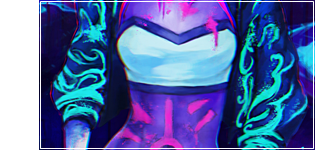 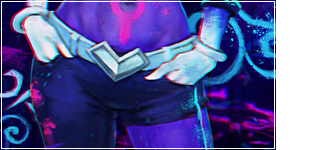 ur opinion = shit |
Sep 27, 2018 8:13 PM
#90
Sep 27, 2018 8:45 PM
#91
| Anime to me is a place where I can go to actually feel something within myself, whether that feeling takes on the emotion of sadness or joy, I can always be sure that anime is going to bring some kind of emotion out of me, without fail. Anime has become so addictive to me for a number of reasons. 1. I grow very attached to characters that I can relate with and/or understand. If a character goes through a struggle that I can personally relate with, I will feel even more drawn to this character, which will only enhance all of that characters scene-time as I progress through the anime that he/she is from. Anime is also a place where I can get away from everything if I just need a time out, a place to be alone, but not in spacious place where I end up thinking too much about what I'm bothered by. Anime allows me to channel my focus into the story and characters, and in fact, transports me into another world. An Anime world, as my conscience is pretty much inside the anime that I am watching at the time, depending on how much I am actually getting into the anime. |
Sep 27, 2018 11:16 PM
#92
| To me, anime is everything you mentioned except for the first one. I don't think I can classify anime as a hobby anymore since it's such a big part of my life now. |
Sep 28, 2018 12:27 AM
#93
| It's a lifestyle for me. My days frequently revolve around the different hobbies I have associated with anime, whether that's watching it, collecting figures and merch, building models, and learning about different parts of the hobby. I consider myself a pretty passionate hobbyist, and anime is a pretty defining part of myself. |
Sep 28, 2018 6:20 AM
#95
| just another variation of something I can do sometimes i watch tv shows, sometimes i play games, sometimes i watch anime |
Sep 28, 2018 7:29 AM
#96
| Anime is entertainment. Not the best, not the worst. It's just another entertainment. The end. |
Sep 28, 2018 7:33 AM
#97
| Anime is just a different form of entertainment and knowledge |
Sep 28, 2018 7:39 AM
#98
| I love how you used wikipedia to find your information. They're almost as reliable as Fox news. There's a reason why schools don't allow you to use that for a source. For me, it's mainly the way you look at it. when someone says cartoons I think of things like spongebob or shows aired on cartoon network. If somebody called anime an "asian cartoon" that would be extremely incorrect considering that anime is Japanese not korean or anything else. If someone were to say "japanese cartoon" that would actually make sense and be immediately identifiable, at least for me. I would compare it to this: someone offers to sell you a puppy. They don't tell you what kind of dog, how old, or what it looks like. Just that this dog is a puppy that this person wants to give you. You automatically assume that this puppy is a few months old and small but you don't really know that, do you? Suppose this dog is a year old and a huge st. bernard and you don't know when you accept this offer. Because, like you assumed the puppy to be small and young, it was big and older. So when someone says "cartoon" I can guarantee everyone would give you an example of something American, not Japanese. One of the bigger differences too is, that with American cartoons, there are many different drawing styles. With anime, the general style is the same. Big eyes, small mouth, etc but with American cartoons you can have drawing styles that range from south park to Cinderella. Remember, A cartoon is almost always assumed to be western unless classified as a "cartoon" from elsewhere. I would apologize for any spelling or grammatical errors but I'm human and make mistakes. Also, I don't really care. Thanks for reading. |
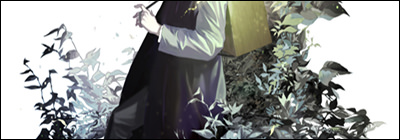 |
Sep 28, 2018 7:44 AM
#99
| It's my favorite hobby, so in other words an important part of my life that brings me joy. |
One Piece episode 914 & 915 & 1027 were a mistake and 957 brought the salvation - FMmatron |
More topics from this board
Poll: » Have y'all seen Rainbow?MillerEvans23 - 10 hours ago |
16 |
by Lucifrost
»»
1 minute ago |
|
» Who are your enemies in the anime industry/fanbase? ( 1 2 )Catalano - Apr 25 |
53 |
by Lucifrost
»»
4 minutes ago |
|
» What if Your Favourite Anime had the Flaws of Your Least Favourite Anime?APolygons2 - 2 hours ago |
16 |
by FanofAction
»»
13 minutes ago |
|
» Why do people complain about "rapey" characters in anime?Alpha_1_Zero - Yesterday |
36 |
by LostSpectre
»»
16 minutes ago |
|
» Tell me why older anime is better that newer anime. ( 1 2 )fluffycow17 - Mar 24, 2021 |
60 |
by LostSpectre
»»
18 minutes ago |





